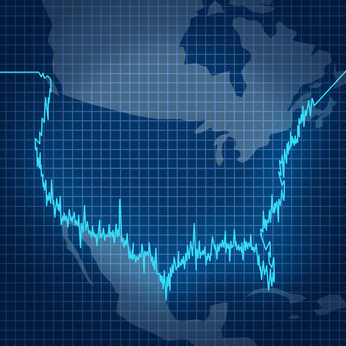As I am wont to do now and then … well, maybe more now than then, I feel the need to correct the economic picture. Simply, the US economy is in a pattern and Europe is on the mend, really.
- Initial claims for state unemployment benefits fell 34,000 to a seasonally adjusted 262,000 for the week ended April 25, the lowest reading since April 2000, the Labor Department said.
The pattern for the US economy is a bad winter, a good spring, a decent summer, a slight uphill move in the fall, and then a dip followed by rise late in the winter.
- Separately, the Commerce Department said consumer spending rose 0.4 percent last month as households stepped up purchases of big-ticket items like automobiles.
All that whining and crying about the knocked down GDP in the first quarter (after a 5% bump in Q4, it made sense), and here we are following the pattern. You would think folks would know by now.
- The increase followed a 0.2 percent gain in February and indicated that consumer spending picked up momentum at the end of the first quarter, which bodes well for consumption in the April-June period.
Yup, it is all about the consumer, you know, the one who holes up in the horrid winter and then comes out in the spring; you know, the one who is finding work and getting paid for it now.
- In a third report, the Labor Department said the Employment Cost Index, the broadest measure of labor costs, advanced 0.7 percent – the largest gain since the third quarter of 2014 – after an unrevised 0.5 percent rise in the fourth quarter.
- Private sector wages and salaries were up 2.8 percent in the 12 months through March, the biggest gain since the third quarter of 2008.
Yup, you would think the market would care about the good economic news, but it doesn’t seem to, as in the background is the stupid Fed issue, you know, the one focused on “When will it raise rates?”
- While there are signs the economy is pulling out of the soft patch, the lack of a vigorous growth rebound has convinced investors the U.S. Federal Reserve will wait until late this year to start hiking interest rates.
Well, that supposition might not be so true now, you know, with wages on the rise, which, by the way, is the “numero uno” factor in the Fed’s measure of inflation. Oh! And speaking of things on the rise, and speaking of economics, which I am, what about that Europe?
- In Germany, the bloc’s powerhouse economy, the government has lifted its growth projections to 1.8 percent this year. But it’s Spain’s surge which is standing out. Its economy grew 0.9 percent in the first quarter, the fastest in seven years and a sign it’s emerging from the recent financial crisis.
Holy cow! Did I read that right? Spain is coming out of its economic doldrums? Did you hear that Greece and Italy? You can do it! Portugal and Ireland, are you happy you have some company now? It looks like the PIIGs consortium is officially over.
- The uptick from Madrid to Berlin comes as the euro bloc capitalizes on a weaker exchange rate, a drop in oil prices, the start of quantitative easing and rising stock markets. The acceleration is also in keeping with the findings of a Bloomberg survey of financial professionals which named Europe as the best place to invest for the first time since at least 2009.
Didn’t I tell you about getting your money into Europe some time back? Well, I did.
Here is the really funny thing – today, I wanted to write about cars, smartphones, and cars and smart phones together, a combo that would prompt four sentences such as the following.
- Cities around the world are coming to the same conclusion: they’d be better off with far fewer cars.
- The car will become an accessory to the smartphone.
- “Multi-modal” and “interconnectivity” are now the words on every urban planner’s lips.
- Surveys show that the one object that is prized is the smartphone, and the future of transport is likely to be based not on individually owned cars but on “mobility as a service.”
And I also wanted to mention oil, again, as it seems we are back on the band wagon of rising oil prices …
- Producers, merchants and other industry participants are selling futures and options contracts that will lock in future profits, ensuring they can keep pumping, data from the U.S. Commodity Futures Trading Commission show. Such so-called short positions are the highest since October 2011. That could be a sign of drillers locking in a future price now because they might not get a better one.
Oh well, maybe tomorrow.
Trade in the day; invest in your life …




